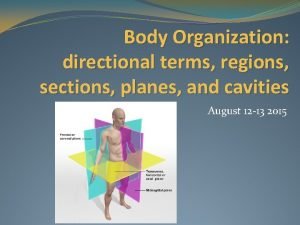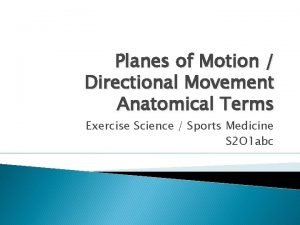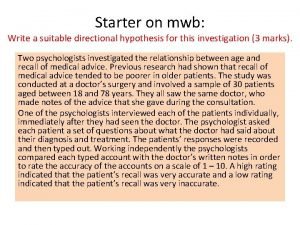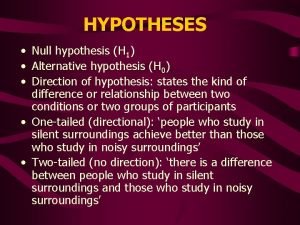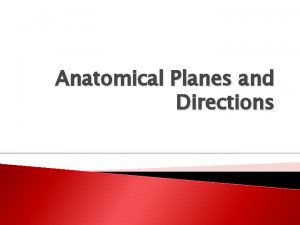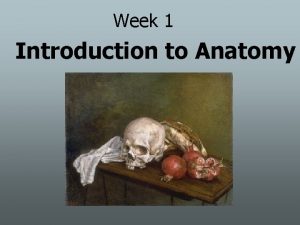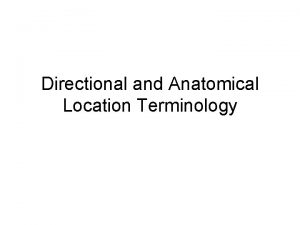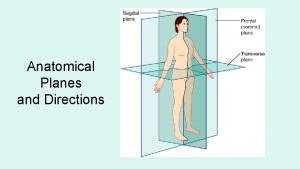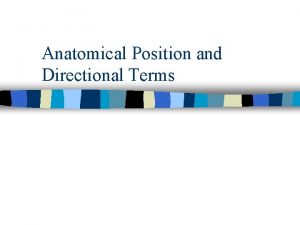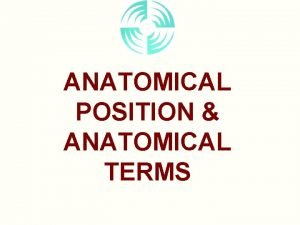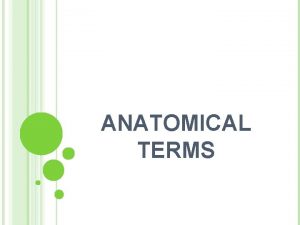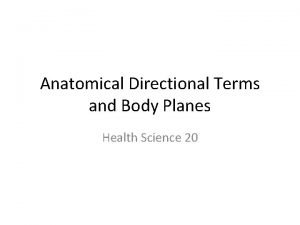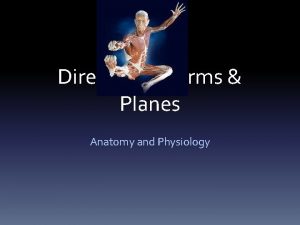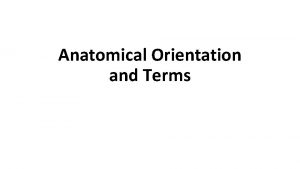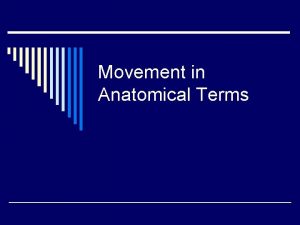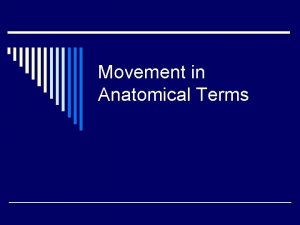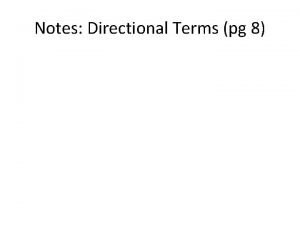Planes of Motion Directional Movement Anatomical Terms Exercise















- Slides: 15

Planes of Motion / Directional Movement Anatomical Terms Exercise Science / Sports Medicine S 2 O 1 abc

Anatomical Position � Anatomical Position – Standing upright, feet together or slightly apart, arms hanging but not touching the sides, with palms forward and thumbs pointing out. Why? The anatomical position is important because it’s the reference for all directional and movement terms.

Planes of Motion � Sagittal Plane(s): Divide the body into right and left segments. � Cardinal Plane: Divides the body into equal and portions. � Midsagittal Plane: Cardinal Sagittal Plane

Planes of Motion Continued � Coronal / Frontal Plane(s)- Divide the body into front and back segments.

Planes of Motion Continued � Transverse / horizontal Plane(s)- Divides the Body into top and bottom segments.

Planes of Motion Continued � Center of Mass / Center of Gravity – The point at which all three cardinal planes intersect.

Directional/Location Terms � Inferior-Refers to a structure being closer to the feet or lower than another structure in the body � Superior-Refers to a structure being closer to the head or higher than another structure in the body

Directional/ Location Terms Cont. � Anterior-Refers to a structure being more in front than another structure in the body � Posterior-Refers to a structure being more in back than another structure in the body

Directional/ Location Terms Cont. � Medial-Refers to a structure being closer to the midline or median plane of the body than another structure of the body � Lateral-Refers to a structure being farther away from the midline than another structure of the body

Directional/ Location Terms Cont. Distal-(Reference to the extremities only) � Refers to a structure being further away from the root or attachment of the limb than another structure in the limb Proximal-(Reference to the extremities only) � Refers to a structure being closer to the root of the limb than another structure in that limb

Directional/ Location Terms Cont. � Superficial-Refers to a structure being closer to the surface of the body than another structure � Deep-Refers to a structure being closer to the core of the body than another structure

Directional/ Location Terms Cont. � Ventral-Towards the front or belly � Dorsal- Towards the back

Directional/ Location Terms Cont. � Prone-Lying face down � Supine-Lying face up

Directional/ Location Terms Cont. � Unilateral- pertaining to one side of the body � Bilateral- pertaining to both sides of the body. � Ipsilateral- movement of both upper and lower extremities on the same side. � Contralateral-movement of opposite upper and lower body extremities.

 Directional terms planes and sections
Directional terms planes and sections Body location terms
Body location terms Directional and non directional hypothesis
Directional and non directional hypothesis General problem in research example
General problem in research example Directional vs non directional hypothesis
Directional vs non directional hypothesis Directional and non directional hypothesis
Directional and non directional hypothesis Directional hypothesis
Directional hypothesis What is directional and non directional hypothesis
What is directional and non directional hypothesis Directional and non directional hypothesis
Directional and non directional hypothesis Body parts in anatomical position
Body parts in anatomical position Anatomical planes
Anatomical planes Midline vs medial
Midline vs medial Hyperextension
Hyperextension Neck anatomical term
Neck anatomical term Dorsal and ventral
Dorsal and ventral Anatomical position supine
Anatomical position supine
